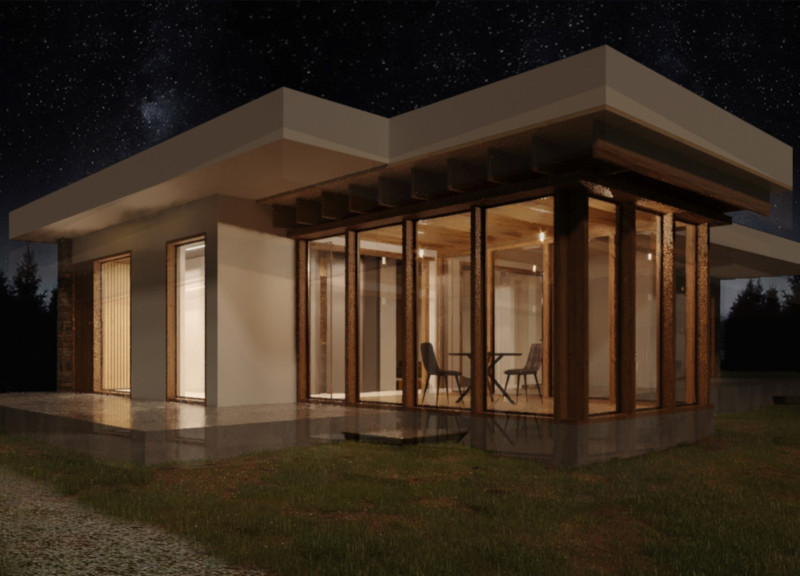5 key facts about this project
The self-sustainable cabin in New Zealand is designed to accommodate two occupants. The project focuses on harmonizing with the surrounding landscape while ensuring a functional living space. The design draws from an understanding of the local climate, geography, and orientation, creating an environment that supports both comfort and connection to nature.
Day Area
The cabin is divided into two main sections: the day area and the night area. In the day area, the living room and pavilion-style dining room are strategically placed to face southeast. This positioning allows for plenty of natural light and provides broad views of the landscape. The design is practical, featuring necessary appliances and a technical maintenance room that enhances the living experience without sacrificing comfort.
Night Area
The night area is dedicated to rest and relaxation. It includes a cozy bedroom that offers direct views of the outside world, accompanied by a detached bathtub nearby. This setup emphasizes privacy while still allowing occupants to enjoy their natural surroundings. The opening doors facilitate a smooth transition between the indoor and outdoor spaces, making the connection with nature more intimate.
Thermal Performance
Addressing local climate needs is an important aspect of the design. A dedicated wall serves dual purposes, providing storage for wardrobes while acting as a barrier that separates the two areas. This design helps block cold winds from the west, enhancing insulation and comfort within the cabin. Such thoughtful planning creates a peaceful and private space for residents.
Sustainable Elements
The choice of materials significantly contributes to the cabin’s overall design. The foundation consists of natural rubble stone masonry with cement mortar, offering a stable base. The structure is made from reinforced rammed earth and timber framing, which adds strength and longevity. The roof features a hidden pitched wooden frame that effectively manages water drainage. To promote sustainability, the cabin incorporates renewable energy sources, including wind turbines and solar panels. These elements allow the dwelling to operate independently, reflecting modern approaches to living in harmony with the environment.
The layout and materials come together to create a practical yet thoughtful retreat, where the natural world becomes an integral part of daily life.






















































